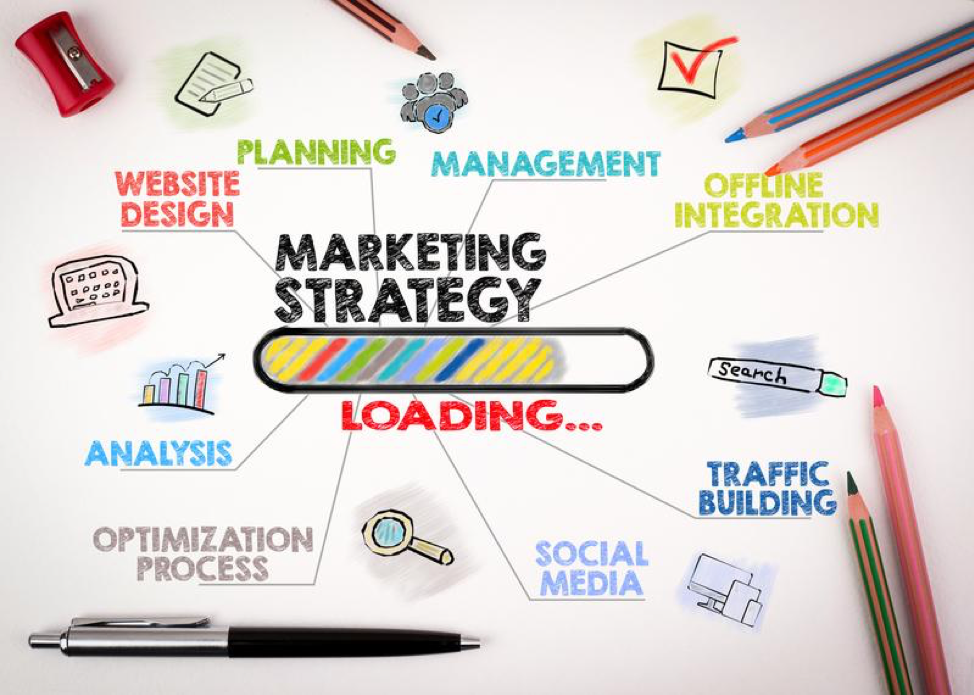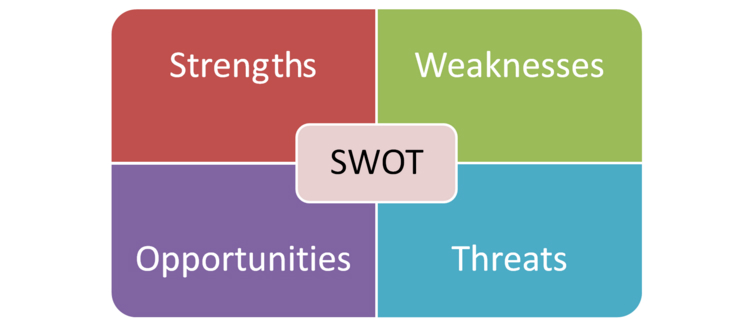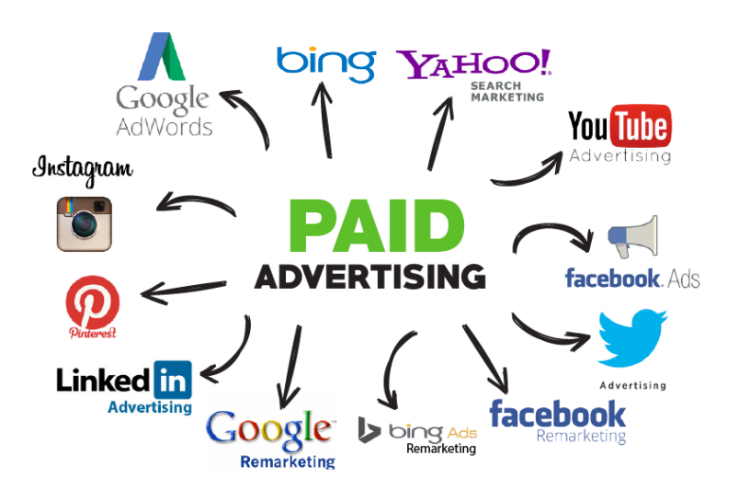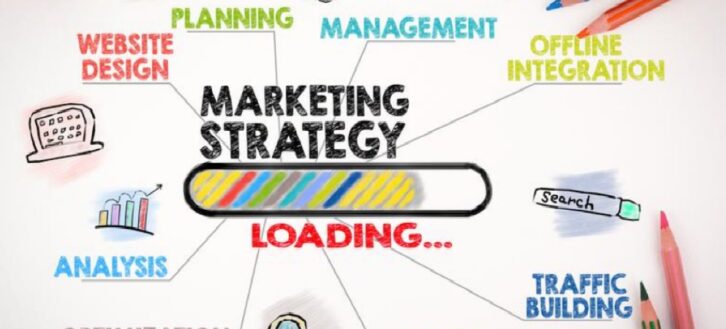Way too many entrepreneurs neglect marketing because they consider it to be less relevant than other business activities, but the truth is that no company can function successfully without a proper marketing strategy.
According to the report, only 37% of B2B marketers and 40% of B2C marketers have a written content marketing plan. While this is a surprisingly low percentage, it does give you a great opportunity to step up and outperform less agile competitors with your own plan of promotional activities.

In this post, we are going to discuss everything you need to know about the benefits of marketing and how to make it super-productive. Here’s a step-by-step guide on how to write a working marketing strategy.

Marketing Strategy: Definition and Benefits
Before we begin describing the basic stages of marketing, we have to explain the concept itself and point out its advantages.
By definition, a marketing strategy is a business’s overall game plan for reaching people and turning them into customers of the product or service that the business provides. Although it may seem like a broad or generic concept, marketing actually gives companies a number of practical benefits:
- Accessibility: Today, almost anyone with the Internet connection can engage and launch his/her own marketing activities.
- Cost-efficiency: You don’t need a big budget to become a marketer. On the contrary, a little bit of inspiration and skills can make you super-successful even if you are operating on a shoestring budget.
- Precision: Digital marketing enables extreme precision and accuracy when targeting prospects.
- Global reach: Modern communication tools allow you to reach roughly two-thirds of the global population almost instantly.
- Personalization: You can also personalize messages and tailor marketing so as to fit each prospect individually.
- Measurable: Another advantage is that you can follow and measure activities, thus making sure to improve the strategy long-term.
The benefits of having a marketing plan are obvious, but now it’s time to see how to make an all-encompassing strategy for your business. Without further ado, let’s check out eight ways to do it effectively.

1. Conduct a SWOT Analysis
A SWOT analysis is the first step toward creating a good plan of marketing activities. After all, it would be unwise to start anything without knowing the pros and cons of your business and your competitors. SWOT represents a four-stage process:
- Strengths: Do you understand the strengths of your brand? What are your comparative advantages? Can you outperform competitors with your skills, expertise, budget, or other resources? Make sure to find it out because it will show you the way to go.
- Weaknesses: Weaknesses make the opposite of the first item on the list. Do you know any business-related details that make you inferior? Is there something you are doing wrong?
- Opportunities: This is where you try to identify new trends and competitors’ pain points. These are opportunities that you can use to stand out, so you might want to think about creating marketing content that helps you to capitalize on such chances.
- Threats: You also need to consider the threats your marketing team could be facing. Are you facing powerful competitors? Perhaps you lack the budget or don’t have experienced personnel in the marketing department? Think about the threats and try to mask them through your content.

2. Determine Your Goals Precisely
The next thing you have to do is determine the goals and objectives of your marketing strategy. Many entrepreneurs say that the goal is clear (grow sales!), but marketing does not function like that. On the contrary, you need to be more precise and follow the SMART pattern:
- Specific: Marketing objectives must be highly specific if you want to know whether the strategy works or not.
- Measurable: It is necessary to quantify your plans in order to measure success.
- Attainable: You have to be realistic when setting goals. You can’t just say – I want to grow the number of leads by 100%. Make it attainable and help your business grow gradually.
- Relevant: Of course, marketing is supposed to help you achieve relevant goals. For instance, you’ll want to raise brand awareness, generate leads, drive conversions, boost customer loyalty, etc.
- Timely: Marketers should also operate within a predetermined timeframe. The whole strategy can hardly help your business advance if cannot reach the goal relatively quickly. Therefore, plan your activities in a way that makes it possible to fulfill objectives in a month or quarterly or annually.
A good example of SMART goal-setting is this: We want to increase the number of verified social media leads by 15% in the next three months. This type of objective is highly specific, measurable, attainable, relevant, and timely.

3. Choose the Best Channels of Communication
Marketers need to choose the right channels of communication because it allows them to reach the target audience. The Internet offers you a whole bunch of options, but the usual suspects in this are websites, email newsletters, and social networks.
A website is the most important communication platform because the average customer will likely search for the brand online to check your offers as well as professional credibility. Jake Gardner, a marketing manager, says writing website is a delicate marketing feature: “You have to make sure to place the right information about your business without bombarding visitors with irrelevant details.”
Email campaigns are also very important because they give you the chance to build long-term relationships with your fans. They will be expecting a fresh newsletter week after week, waiting to find out industry news, read interviews, and learn about the latest products in your portfolio.
Of course, social networks represent a quintessential marketing tool of our era. The likes of Facebook and Instagram gather almost four billion users, thus allowing you to approach different customer groups all over the world.
However, we do not recommend you to create accounts on dozens of social platforms because it will take you too much time to control and administer each one. Instead, you should concentrate on two or three networks relevant to your audience exclusively.

4. Plan and Create Amazing Content
Each step of marketing planning is highly relevant, but we believe that content creation is by far the most important segment. How come?
Well, a typical customer visits your website and follows social accounts because she/he wants to stay up to date with the latest products and niche topics. This is why you have to indulge them by publishing top-level content that evokes curiosity and makes them want to read more.
Make sure to create a schedule and stick to it regularly. This is one way to plan activities:
- Website: Add a new post once a week or once every 15 days
- Email: Follow the same principle and send newsletters weekly or biweekly
- Social media: Post content every day
Of course, the three channels demand different types of content. Website visitors mostly want to read long-form articles that solve practical problems in a step-by-step manner. It means you should publish a lot of how-to posts and tutorials.
On the other hand, email newsletters and email marketing should combine articles with interviews, industry insights, visuals, etc. Finally, social media allow you to publish lighter content that is both entertaining and educational. Keep in mind, however, that users publish millions of social posts daily, so you also need to be agile and add fresh content frequently.

5. Optimize Content for Search Engines
Do you know that as much as 93% of the entire Internet traffic comes from a search engine? Almost every user begins online activities via Google, so you have to optimize the website content so as to maximize the discoverability of the business.
There are many different ways to make your site SEO-friendly, but we will discuss only the three most critical factors here:
- Keyword optimization: You probably understand the importance of keywords. They help search engines to identify, index, and categorize your content. This means you have to find the best terms and phrases for each post and use them frequently throughout. There are many useful tools to help you with keyword research, but we will talk about it in one of the next chapters.
- Mobile optimization: A vast majority of users now browses the Internet using smartphones, so you must make sure that your website is properly optimized for mobile experience.
- Page load speed: This is another extremely important aspect of optimization because search engines penalize slow websites. The average user wants a webpage to load in two or three seconds the most, which forces you to make the site super-fast.

6. Take Advantage of Paid Advertising
Although we are trying to focus on cost-free marketing tactics, you should not run away from paid advertising. As a matter of fact, it is often necessary to supplement organic efforts with paid promotion because it’s the only way to make a breakthrough.
You can use tons of advertising platforms, but the most common solutions are Google AdSense and Facebook Ads. The two platforms don’t only grant global visibility but also enable incredibly precise audience targeting, which means that you don’t have to worry about ROI.
For instance, Facebook Ads gives you three possibilities:
- Core audiences: Target users based on demographic traits like gender or age.
- Custom audiences: Search for users who already interacted with your brand via the website or any other channel of communication.
- Lookalike audiences: You can also target people who look like your current customers.

7. Make Use of Marketing Tools
The good thing about digital marketing is that you don’t have to run and administer campaigns all by yourself. Instead of doing things manually, you can use automation tools to kickstart marketing activities and ensure effortless execution.
As usual, there are all sorts of apps, program, and plugins that you can test, but it all depends on the nature of your business and the content you are focusing on. What we can do is show you our favorite tools here:
- Grammarly: It’s the most popular editing and proofreading plugin that can check your documents in a matter of seconds and show you every grammar or spelling mistake.
- Google Keyword Planner: Google developed a keyword research platform that allows you to filter through a bunch of search terms and find the most valuable options for your content.
- CoSchedule Headline Analyzer: Titles make a critical segment of every post, so you better use Headline Analyzer to assess and improve the opening lines of your articles.
- Google Calendar: If you need a tool to plan and schedule marketing activities, we recommend you to try Google Calendar.
- Mobile-Friendly Test: We already explained the importance of mobile-friendliness, but we failed to mention how to test it.
- Pingdom: Pingdom allows you to test page load speed and find a way to improve website performance quickly.
8. Don’t Forget the Real-World Marketing
The last piece of the marketing puzzle is extremely important for local businesses trying to win over nearby audiences. If you are running a physical store or a few of them, don’t forget to implement some real-world activities.
Doing so, you will help customers to find your organization and keep it in mind long-term. How you do it depends on the type of your business, but we can certainly recommend you to test several tactics:
- Organize local community events
- Advertise in popular publications and magazines
- Give special offers to regular customers
- Organize on-site promotions
- Print and disseminate posters, flyers, and brochures
Conclusion
Business and marketing go together hand in hand. Think about the largest brands on the global scale – Coca Cola, Apple, McDonald’s, etc. – and you’ll realize that each has an incredibly powerful marketing strategy that makes it recognizable worldwide.
This is exactly why your company deserves a comprehensive plan of activities to help your brand stand out from the crowd of more or less similar competitors. In this article, you could learn:
- What makes a marketing strategy
- The benefits of marketing
- How to create a marketing plan step-by-step
Do you have a marketing strategy already? Did you follow each one of the steps we mentioned above? Feel free to let us know in comments so we can discuss it together!


